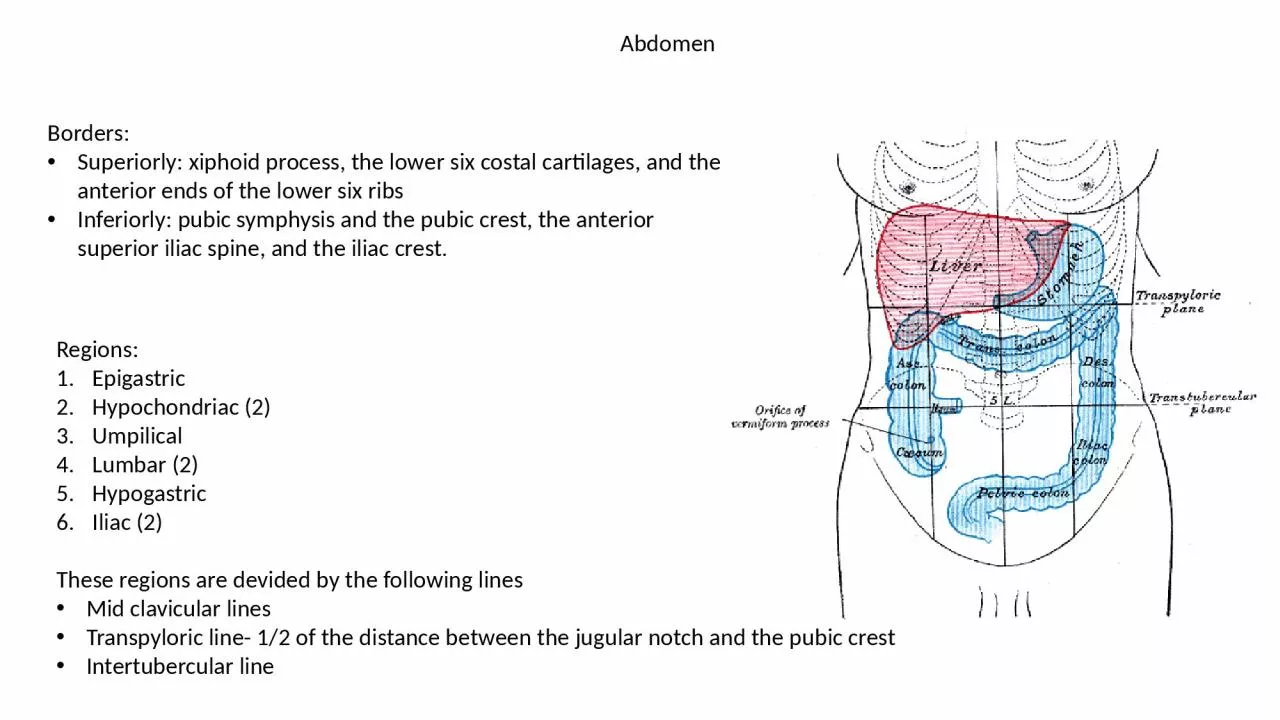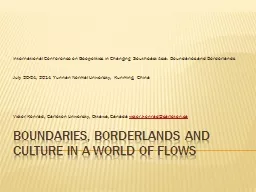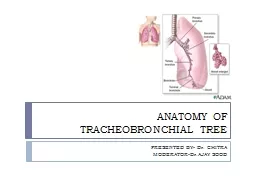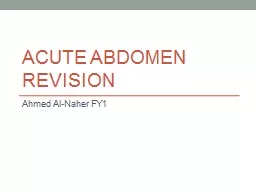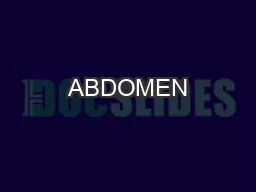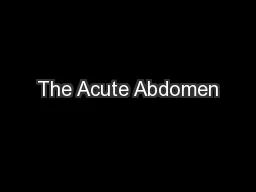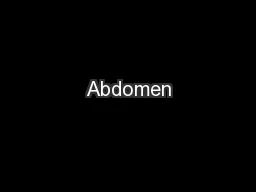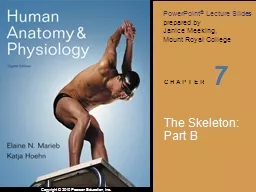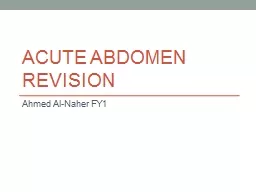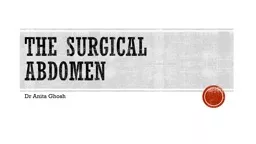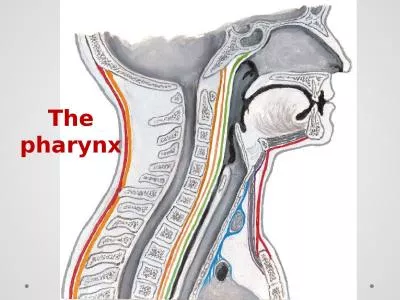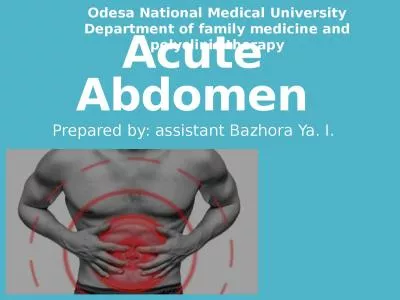PPT-Abdomen Borders : Superiorly: xiphoid process, the lower six costal cartilages, and the
Author : ava | Published Date : 2023-11-24
Inferiorly pubic symphysis and the pubic crest the anterior superior iliac spine and the iliac crest Regions Epigastric Hypochondriac 2 Umpilical Lumbar 2 Hypogastric
Presentation Embed Code
Download Presentation
Download Presentation The PPT/PDF document "Abdomen Borders : Superiorly: xiphoid p..." is the property of its rightful owner. Permission is granted to download and print the materials on this website for personal, non-commercial use only, and to display it on your personal computer provided you do not modify the materials and that you retain all copyright notices contained in the materials. By downloading content from our website, you accept the terms of this agreement.
Abdomen Borders : Superiorly: xiphoid process, the lower six costal cartilages, and the: Transcript
Download Rules Of Document
"Abdomen Borders : Superiorly: xiphoid process, the lower six costal cartilages, and the"The content belongs to its owner. You may download and print it for personal use, without modification, and keep all copyright notices. By downloading, you agree to these terms.
Related Documents

